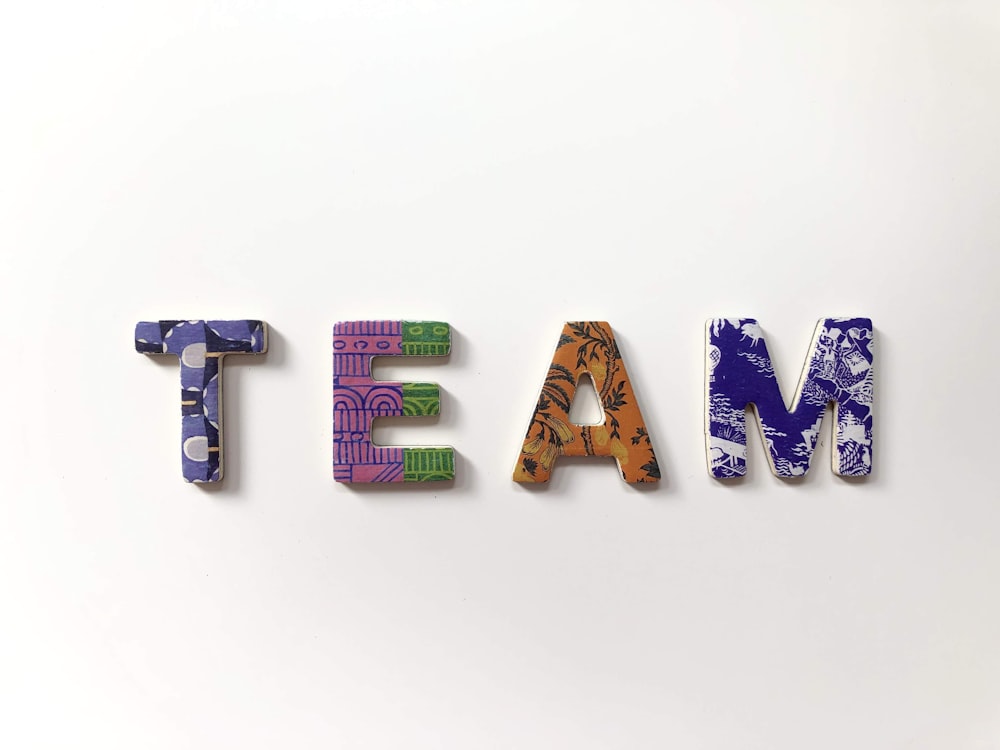The Complete Guide to Leading a Team and Developing Them into Future Leaders

Today’s workplace isn’t just a product of the pandemic and unstable economy. It’s been happening right before our eyes. Quiet quitting isn’t a new thing, as influencers would have you believe. Neither are disengaged employees or sagging attrition rates. Somehow management and staff have drifted apart, making revamped leadership and team development priorities for organizations.
Traditional management styles don’t appreciate the complexity of issues facing today’s workforce. Unprecedented events and their consequences require a new approach. Even our definition of a team leader has evolved. To stay relevant, leaders must be willing to change their mindset. As John F. Kennedy said, "Leadership and learning are indispensable to each other."
Introduction to Leadership & Team Development
Too often, management begins their jobs with little onboarding or training. They’re expected to know instinctively what to do regardless of their industry experience. However, leading teams is a long process of learning, failing, and starting over, hopefully, armed with the knowledge taught by sometimes painful lessons.
Therefore, learning and adaptability are keys to successful leadership and team development.
What is Leadership?
Defining team leadership begins with the person directing the group’s actions. This individual galvanizes their team and propels their employees forward with a shared vision. Transparency and clear communication are imperative. Leadership is proactive instead of reactive. It embraces active listening rather than dogma. Successful leadership knows no dead ends, only solutions waiting for discovery.
Perhaps the most essential of leadership skills is empathy. It is the hallmark of the evolving workplace, something 90 percent of GenZ employees want from their employers.
Why is it Important for Teams?
A team leader acts as the guiding light and inspiration during stability and uncertainty. This individual will help the employees stay on course in the wake of setbacks and unintended consequences. After all, it’s not a question of whether the unforeseen will happen but when it will occur. Successful leaders will move forward despite the headwinds. They cultivated the resilience of their teams to endure.
How Can I Become a Better Leader?
A good leadership training program will emphasize the defining trait of effective teams, trust. If you wonder how to be a better leader, that’s where you must start. It embodies everything a leadership team strives to obtain. It creates a psychologically safe workplace where open communication can unleash creativity and solve problems quicker.
Personal and leadership accountability is baked into the mix since everyone on your team will understand their obligations to the mission. The results are heightened productivity, a lower turnover rate, and the benefit of collective knowledge and experience.
That may sound like a tall order. However, many things are common sense. Interestingly, it begins with the manager. A better leader is supportive of the team and is secure enough to trust their employees to do their jobs. After all, it is a two-way street. A team leader knows that trust is a work in progress that requires continuous nurturing. The process follows a predictable sequence of milestones.
Team Development Process: The Cycle of Successful Teams
The team development process builds upon itself and gains momentum. However, it’s not forced. It isn’t a one-size-fits-all proposition, either. American psychological researcher Bruce Tuckman’s stages of group development provide a framework to understand how to implement it successfully in your organization. According to Tuckman, the four stages in the team development cycle are:
- Forming
- Storming
- Norming
- Performing
Stage 1. Forming
This one is the so-called honeymoon phase. Enthusiasm runs high with the positive energy of starting a new venture. Uncertainty and anxiety are often a part of the atmosphere. Change isn’t always easy or welcome for many people. The goal for the management team is to harness positivity and use it to set clear expectations. That will build a solid foundation that can alleviate the stress of uncertainty.
It’s essential to remember that even though the atmosphere is positive, the fodder for some types of organizational stress is still present. It behooves a leader to set the tempo right from the start. The focus should be on the team at this point instead of deadlines and task completion.
Stage 2. Storming
The term may sound more negative than it actually plays out during this stage. As employees start working on projects, they may feel frustrated by their workloads and the expectations placed upon them. The excitement of the initial stage has waned, and now reality is settling into place. It’s the time when a leader needs to step up in the team development cycle.
Rewriting game plans and optimizing team dynamics can get everyone on point again. It would be great if everything worked right out of the gate. However, reality often tells a different story. That’s why we refer to it as a work in progress with a learning curve. A leader must also have time to observe and strategize. It may mean a different path than what was originally envisioned. But that’s okay.
Stage 3. Norming
The cohesiveness of the team starts to become evident at this point. The tension of the Storming Stage is giving way to a psychologically safe work environment as co-workers get to know each other better. It is more of a group atmosphere instead of an individual vying for attention. The employees have garnered shared experiences with difficult clients or industry idiosyncrasies that strengthen their bonds.
Interestingly, it often occurs slowly and almost without anyone aware that the dynamics have changed. The team leader can now focus on projects and objectives. The staff becomes more productive as they settle into their roles and understand the elements of their personal accountability. The team is in sync without the distractions marking earlier stages.
Stage 4. Performing
The team is firing on all cylinders at this point. Productivity is high. Individuals feel part of something bigger, and it shows in their commitment to the organization’s objectives. The team leadership continues to direct the workflow and tweak the process as necessary. The leader becomes the inspiration to keep the employees working toward their goals.
One-on-one check-ins are essential to maintain the momentum. However, the solid foundation and strong relationships among team members encourage open communication. Team members feel free to speak their minds even if the feedback is sometimes negative. It’s an ideal time in leadership development for sowing the seeds to cultivate new talent within the group.
A fifth stage involving the dissolution of the team if it’s applicable. However, we’re going to focus on the long-term.
Elements of Great Teams & How You Can Make Yours Even Better
Managers who struggle meeting deadlines and goals may wonder what makes great teams successful. How can you make your group stronger and even better? Trust is paramount. Balance is also imperative. American author John C. Maxwell summarized it well by saying, “A good leader is a person who takes a little more than his share of the blame and a little less than his share of the credit.”
One of the most telling elements of successful teams is leaders and employees working together with everyone in alignment. Traditionally, a culture of church and state has existed in the workplace with a definite manager and their group of followers. This model of vertical leadership has been the norm for organizations.
However, today’s workplace isn’t the same as it was even just five years ago. Thus, the traits defining it have also evolved. A high-performing team has a collective vision of what success looks like and what each individual’s role is in its fruition. The group works in unison with all the moving parts operating in sync with complementary skill sets.
The shared trust allows team members to solve problems better as they inevitably appear. That helps them work more efficiently. It also improves employee engagement. The latter is vital. According to the 2021 Gallup State of the Workplace Report, organizations with highly engaged staff experience 41 percent lower absenteeism, 24 percent lower turnover, and 20 percent higher sales.
The next question is how can leaders realize these benefits?
How To Coach Your Employees Into Great Leaders and Teams
The answer rests with leadership and retooling it to fit your organization and its goals as defined by the stages of team development. The crux is an ethical and empathetic leader. This individual focuses on the organization’s mission while recognizing that every team member walks their own path with challenges that have nothing to do with the company. The leader has four tasks for developing teams.
Information Gathering
Coaching your employees begins with observing how the team functions. It’s an excellent time to solicit feedback with one-on-one meetings. Ask for suggestions on areas of improvement. It’s imperative that the staff feels secure and comfortable sharing their thoughts with management. Anything you learn during this information gathering goes on your leadership team development checklist.
Rechanneling the Negative
Leadership coaching shines when it can rechannel negative feedback into something positive. Anger or frustration are merely misdirected energy. Addressing employee comments sends a powerful message to your team. It shows you trust their judgment and value their contributions. It’s also a test for leaders to put emotional intelligence and active listening to work.
Focus on Employee Development
If you’re not investing in your team’s learning and development (L&D), you’re setting the stage for a higher turnover rate. An astonishing 94 percent of workers would stick with an organization that offered this perk. Too often, organizations offer benefits employees don’t value, such as on-site amenities and free snacks.
Your workers want to learn and improve their chances for advancement. Employers also benefit from a well-trained staff with improved productivity and greater engagement. It’s the proverbial win-win. However, it’s not just about giving people what they want. It’s crucial for businesses to grow with a projected skill gap of 40 percent by 2025.
The best way to approach this task is to involve individuals in the development of their career paths. It’s another opportunity for leadership to optimize the dynamics by focusing on complementary skill sets to build stronger teams.
Shared Team Leadership
Developing teams also has lessons for leadership. No one can do everything in an organization, nor should the expectation exist. Therefore, it’s critical for leaders to delegate work to their employees. Manager stress is a thing, too. An excellent solution is to embrace the power of shared team leadership.
The person in charge is still present. However, this approach takes advantage of your workers’ knowledge. Different personality types lend them to various skill sets. If a project may succeed with the experience one team member has, an organization can benefit from their expertise. Remember that it also fulfills individual desires for advancement and more responsibility.
Of course, shared team leadership also fosters trust. You trust your people to do their jobs in part because you ensured they received excellent training. It empowers your employees by giving them ownership. They become stakeholders in the organization’s success. It’s also another way to rekindle the energy of enthusiasm that existed in the Forming Stage of the team development cycle.
An unforeseen benefit is giving leaders a welcome break from the always-on culture that permeates the corporate world. Remember that work-life balance has been a powerful driver of the Great Resignation. Shared team leadership can ensure your employees take their vacation and turn it off when the work day ends. It’ll relieve stress and support their mental health.
Free Preview
Sign up now and get access to our Free Preview as well as the freshest tips and tricks delivered to your inbox once a week. Our weekly newsletter is trusted by thousands of managers, executive leaders, and learning & development professionals.
We hate SPAM. We will never sell your information, for any reason.



